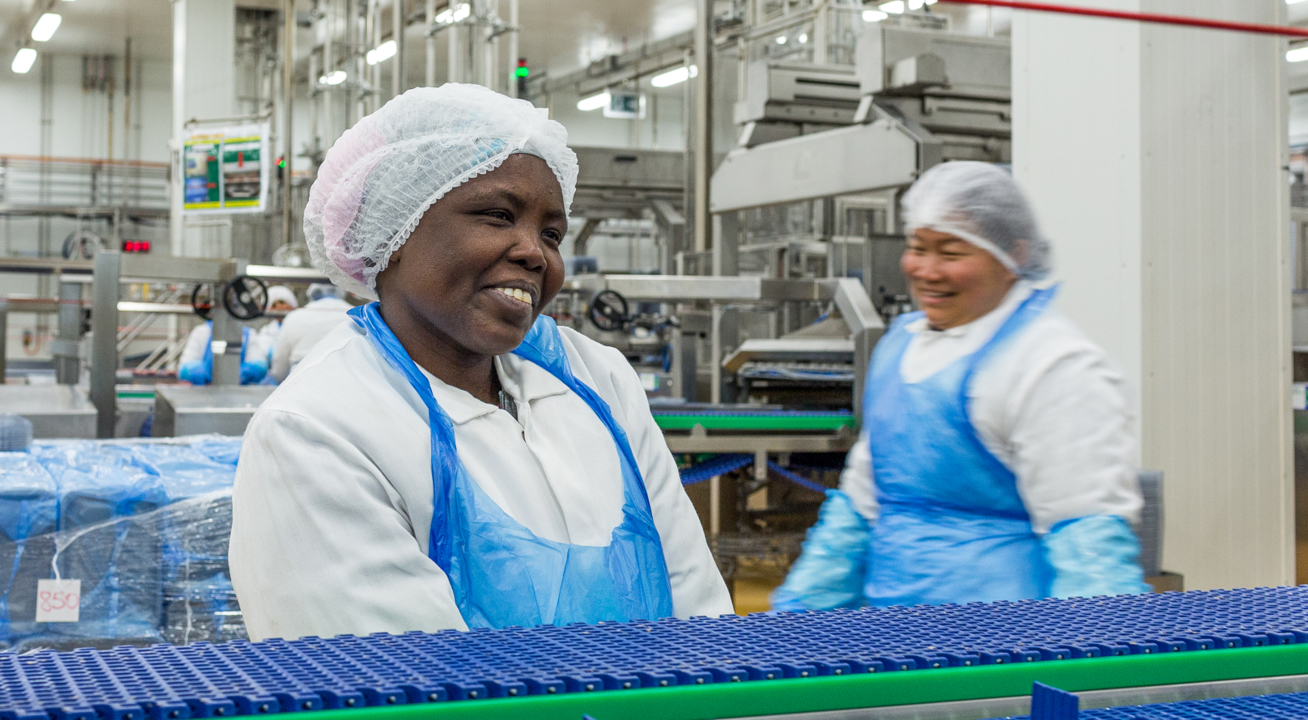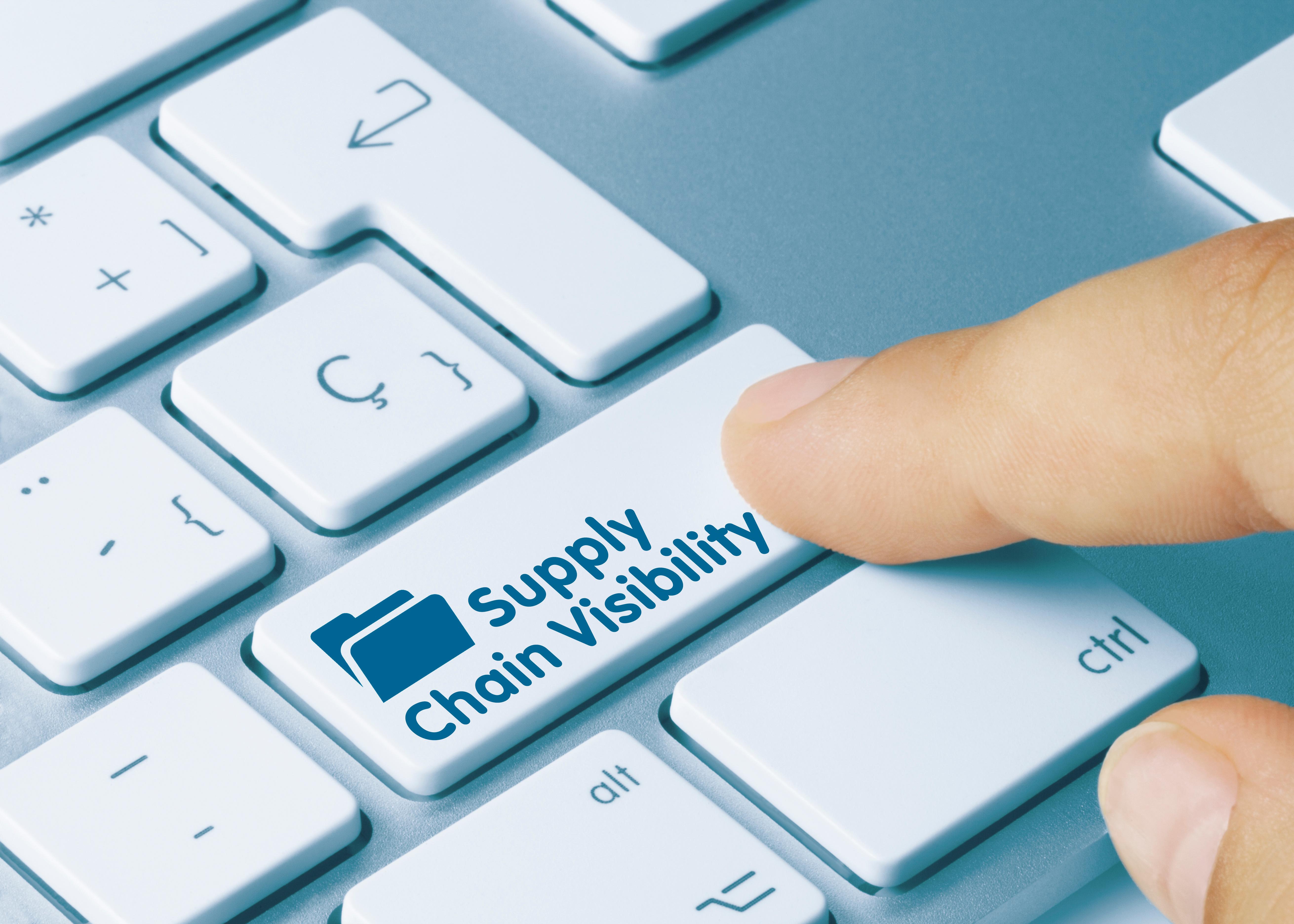Our experts provide a comprehensive guide to how Good Manufacturing Practice (GMP) ensures the highest standards of food safety and quality.
Good Manufacturing Practice (GMP) in the food industry consists of rules and guidelines governing food production processes. It aims to promote food safety by defining the standards that manufacturers should uphold. This includes the equipment required for safe food production and rules and recommendations for production processes. GMP also specifies the controls that should be implemented, the requirements food processing facilities must comply with to produce safe food, the areas scrutinised during inspections and internal audits and the maximum defect levels considered acceptable.
Standards for GMP are formed in collaboration with various organisations from across the world who are committed to the furtherance of food safety and quality, including the Food and Drug Administration (FDA) and the European Food Safety Authority.
What is the importance of GMP in the food industry?
The most important function of GMP is to create a standardised approach to food safety in the interest of public health. Thanks to GMP provisions, consumers can have greater confidence in the safety and quality of their food products. Naturally, you’d like to promote consumer safety and trust, but there are other benefits in store for food businesses that implement GMP.
As part of your GMP approach, your business will develop procedures and processes to ensure quality and consistency. Implementing GMP requires attention to sustainability. Food labelling best practices are also a key area of focus. In short, implementing GMP safeguards brand reputations, enhances consumer confidence, and reduces the risk of failed audits and financial loss through product recalls.
What are the main principles of GMP in the food industry?
Because each food business is different, it would be difficult to provide a simple example of GMP in action that would apply to all food manufacturing concerns. However, broad principles can offer a glimpse into how GMP works in practice:
- Develop and adhere to Standard Operating Procedures (SOPs) to uphold benchmarks for product quality and consistency.
- Monitor and observe how procedures are carried out. SOPs will not have their intended effect if employees deviate from them. Once you are satisfied that your SOPs can be properly implemented, you’ll need evidence that they continue to fulfil their intended purpose.
- Keep complete records. Documentation is required for regulatory compliance and will help you refine SOPs and their attendant checks and balances. Record-keeping is scrutinised during regular audits.
- During internal audits and inspections, verify and validate specifications and Standard Operating Procedures. Make sure that practices are fit for purpose, and that this is reflected through fastidious record-keeping.
- Ensure that equipment and facilities align with GMP requirements and that they will be able to perform consistently. This includes maintaining equipment and facilities so that they remain compliant and effective, while also meticulously documenting any maintenance actions or opportunities for further improvement.
- Define necessary worker competencies with GMP compliance in mind. Provide necessary training and verify that workers demonstrate the appropriate skills and knowledge in practice. This helps to promote reliable worker support in implementing your food safety programmes.
- Develop and follow sanitation and hygiene requirements to prevent contamination during manufacturing. Provide clear procedures for the maintenance of a safe environment and implement checks to ensure adherence to standards.
- Implement quality control measures ensuring that food preparation, handling, packaging and labelling practices are consistent. Define critical areas where controls must be implemented and ensure thorough record-keeping. Although you may believe you’ve covered every contingency, sustain your momentum and keep analysing results to drive continual improvement.
- Conduct audits targeting adherence to GMP guidelines and regulatory compliance. Routine internal audits will be helpful, but specialist perspectives may indicate additional focus areas.
How does GMP vary in the food industry?
Food processing
GMP in food processing will vary depending on context. For example, if you are dealing with perishable ingredients, your approach will incorporate variables such as temperature and freshness.
Regulatory requirements also differ depending on the countries in which food is produced and sold and industry-specific standards may apply. Besides this, processing methods will have a role to play. For example, heat processing in the production of canned goods requires temperatures that ensure effective sterilisation.
Quality control and testing will vary based on the products manufactured and the environments in which they are produced. For example, there may be a need for microbial testing or chemical analysis. Where allergens are present in the production environment, routines must be in place to prevent contamination.
Food packaging
The stability and integrity of processed foods depends on their packaging. GMPs specify what materials can be used in packaging. It specifies criteria for conformance with packaging integrity requirements and storage conditions. GMPs also require correct consumer information to be displayed on packaging. This includes ingredient lists, allergen warnings, and expiry dates.
How do HACCP relate to GMP in the food industry?
Hazard Analysis Critical Control Points (HACCP) are vital parameters for GMP. While GMP provides the broad guidance you need to achieve food safety, HACCP indicate where controls must be implemented in the production process so that GMP standards are met.
They serve as the decisive moments at which measurements are taken, results recorded, and if necessary, corrective actions are initiated.
Regulations for GMP in the food industry
Although GMP addresses common food safety and quality goals, specific countries have their own unique approaches. Bear in mind that subject areas like the use of food additives and allergen management and disclosure are governed by various statutes and sections of statutes. In the examples below, prominent GMP laws applicable in the USA and EU are listed. The UK has retained EU food safety laws following Brexit.
Examples of GMP regulations in the USA
- Title 21 of the Code of Federal Regulations (CFR), Part 117. These regulations include a section titled “Current Good Manufacturing Practice, Hazard Analysis, and Risk Based Preventive Controls for Human Food” that will be of particular interest. As a foundational set of regulations, it provides an overview of GMP as applied in the USA.
- 9 CFR Part 416 deals with requirements for the maintenance of sanitary conditions in facilities. It specifies important sanitation measures and allowable parameters for variance.
- 9 CFR Part 417 speaks to HACCP systems. These will be your primary points for quality control and food safety. Reacting to anomalies at this stage will allow you to correct issues or take prompt action if defects are severe enough to pose risks to consumers.
- 21 CFR Part 110 relates to packaging and labelling materials. It answers your questions on the requirements for food-grade packing and labelling, helping you to close an additional route for possible contamination.
Examples of GMP regulations in the EU (Retained by the UK)
- The general principles underlying food law requirements are captured in Regulation (EC) No 178/2002. This regulation provides an overview of GMP requirements in Europe.
- Regulation (EC) No 852/2004 presents general food hygiene regulations. It stipulates hygiene requirements, covers HACCP and requires official registration of food-producing businesses.
- GMP hygiene requirements for foods of animal origin are set out in Regulation (EC) No 853/2004. Foods of animal origin require particularly careful attention to sourcing, storage, handling, and manufacturing environments. This regulation outlines the EU’s rules, regulations, and parameters in this regard.
- Regulation (EC) No 1935/2004 deals with “materials or articles intended to come into contact with food” including packaging. During processing, a variety of materials will inevitably come into contact with food. This set of regulations stipulates safety-related measures to be taken in the selection of all materials that will come into contact with food. For example, conveyor belts and packaging materials should not be sources of chemical contamination.
ISO 2200 and GMP
The complexity of the regulatory environment can seem daunting, especially when products are sold across international borders. The International Standards Organisation (ISO) has developed a certification program that addresses GMP requirements holistically.
Achieving ISO 2200 certification can be a costly process. Most businesses employ consultants to guide them through their journey towards this milestone, and ISO certification fees represent an additional cost. However, ISO 2200 certification is respected around the world, representing assurance that your food business is fully compliant.
Creating a checklist for GMP food safety audits
Checklists are simple yet effective tools for maintaining standards and verifying GMP compliance. Internal audits prepare you for third-party audits required for certifications and inspection by local health authorities.
A sample template targeting compliance with US food safety regulations is offered by the USDA and covers GMP inspections in complex manufacturing environments. For audits in the EU or UK, a template by the UK Food Standards Agency acts as an example of simpler checklists applicable to food retail outlets and restaurants.
Consider getting professional assistance
Since this area is one of considerable complexity, professional assistance may be required when formulating a GMP food safety audit checklist. As a result, forming a relationship with GMP audit consultants may be advisable. Apart from helping you to formulate and follow self-audit checklists, they will be able to assist with periodic independent audits to keep you on track.
However, in straightforward small business contexts, it may be possible to use a relatively simple template similar to the one suggested by UK Food Standards Agency, adapting it to your food service or retail business.
Test GMP food safety audit checklists and self-audit procedures
Once you have a draft version of your self-audit checklist, it must be tested in practice. Responsible persons may require additional training on the details they should be alert to and the parameters they should use to form conclusions. If your list was developed in consultation with GMP professionals, they will be able to guide your personnel through the processes required for completion of the checklist.
The Foods Connected tools are designed to help with audits. Supplier audits can be conducted using the Supplier Audit Manager tool, with the documents then stored in Internal Document Manager and signed off by suppliers using Supplier Document Manager. While internal audits can be run through Internal Document Manager, stored in the Internal Document Manager, with risk assessments carried out using Risk Assessment Manager.
Revise self-audit checklists periodically and in response to changes or incidents
No matter how thoroughly you compile a self-audit checklist, it will require periodic revision. If you were to introduce new ingredients or equipment into your manufacturing processes, immediate revisions are required.
Elements of a GMP food safety audit checklist
Personnel training, supervision & hygiene
There must be documented evidence of personnel members’ food safety qualifications or in-house training. Provisions for supervision by qualified individuals must be in place, and a fit-for-purpose hygiene policy with evidence of effective implementation is required.
Supply chain audits & handling of production inputs
Since your food business is responsible for its products, supply chain audits help you verify that your suppliers support your food safety obligations.
To check the integrity of delivered goods, documented procedures for receiving raw materials or ingredients must be captured. Ensure that methods used to comply with food safety standards form part of goods-receiving procedures.
Storage facilities must be compliant and designed to reduce risk. Processes and controls to maintain adequate sanitation of facilities including assignment of responsibility, training received, and measures taken to prevent allergen cross-contamination must be recorded.
Raw ingredient handling including inspections, handling practices, ingredient segregation, processes such as washing or pasteurisation, proper storage, and all associated record keeping form part of audits.
Allergen & microbiological contaminant management
Procedures for allergen management should be a focus. This includes the identification of allergens present in the facility and measures to prevent cross-contamination during storage and processing. Steps will include sanitation of equipment and utensils that may have been exposed to allergens and segregation of allergens during manufacturing.
Pathogens are of equal concern. Measures taken to prevent the growth of undesirable microorganisms include cold storage, cooking, freezing pasteurisation, and pH control within strict parameters. Your audit checklist includes the inspection of records and observation of actions on current production lines.
Foreign objects
Foreign objects can pose food safety risks if introduced into production lines. Strategies must be devised to safeguard against this. This can include simple policies. For example, personnel handling food should not wear jewellery. Equipment can also present a risk. Automated monitoring systems and regular equipment maintenance are helpful in addressing this.
Specifications & recordkeeping related to equipment sanitation and maintenance
Stipulate and record maintenance and sanitation procedures. For example, periodic disassembly of certain equipment may be needed for proper cleaning. In addition, steps taken to prevent contamination by lubricants or metal fragments must be outlined and recorded.
Provide evidence of calibration and maintenance of instruments and controls used during production. For example, pH monitoring and temperature regulation controls must be accurate and the system must be adequate to the task of maintaining food safety.
Standard Operating Practices (SOPs) for consistent GMP implementation
Thorough SOPs must be in place. Every process food ingredients undergo on production lines must be documented with evidence of compliance being gathered and recorded at critical points.
Food contact surfaces & packaging
Provide evidence that food contact surfaces have been selected, managed, maintained, and sanitised with food safety requirements in mind. For example, seamless welds and joints promote effective sanitation.
Packaging must be food-safe and tamper-evident. Detailed information on packaging materials and processes furthering food safety must be available. Your records provide evidence that packaging has been designed, sourced and used with the prevention of contamination as a priority. Furthermore, information on packaging and labels must align with GMP regulations.
Waste & defective products
Policies and procedures for handling waste and contaminants must be readily available with accompanying evidence of compliance. Defective product handling may differ from regular waste handling, but must also be consistently managed with an eye to food safety and thorough record keeping.
Structure, fittings, fixtures, infrastructure & surrounds
The exterior of food manufacturing facilities should be managed to reduce environmental contamination. The buildings themselves must be well-maintained to prevent contamination.
Inspection records and maintenance schedules should be up to date. This applies to infrastructure too. Plumbing that ensures adequate provision of potable water for production and hygiene is essential. Other considerations include sewage and water waste management, and stormwater drainage.
Naturally, staff facilities such as hand washing stations, washrooms, and staff toilets should be well-designed, clean and hygienically maintained.
Pest control & chemicals
Chemicals and supplies must be selected to limit risk in a food production environment. For example, food-grade lubricants may be used on exposed equipment. All chemicals should be properly labelled and stored.
Pest control measures and regular pest control inspections must be implemented and recorded. The facility should be pest-free at all times.
Finished products & outbound shipments
With your products packaged and ready, your next priorities are storage prior to dispatch and the maintenance of food safety during transit and delivery. Ensure that all processes are handled in such a way that contamination risks are addressed and record all actions taken. This may include segregation of products containing allergens and measures such as cold storage and refrigerated transportation.
Implement food safety with Foods Connected
Internal and supplier audits and inspections are prerequisites for effective GMP. Foods Connected provides a full suite of specialised supply chain software solutions for the food and beverage industries. To find out more about our safety, quality and compliance software, request a demo today!
.jpg)
Greer McNally
Greer has over 15 years’ experience writing about trends in the food and retail sectors. She lives in a little village by the sea in Northern Ireland and loves creating content that informs how people think about the food industry. A recent career highlight was interviewing the legend that is Dr Temple Grandin.
Stay up to date
Stay up to date
Browse Posts
- December 2025
- November 2025
- October 2025
- September 2025
- August 2025
- July 2025
- June 2025
- May 2025
- April 2025
- March 2025
- February 2025
- January 2025
- December 2024
- November 2024
- October 2024
- September 2024
- August 2024
- July 2024
- June 2024
- May 2024
- April 2024
- March 2024
- February 2024
- January 2024
- December 2023
- November 2023
- October 2023
- September 2023
- August 2023
- July 2023
- June 2023
- May 2023
- April 2023
- March 2023
- December 2022
- November 2022
- October 2022
- September 2022
- August 2022
- July 2022
- June 2022
- May 2022
- April 2022
- March 2022
- February 2022
- January 2022
- December 2021
- November 2021
- October 2021
- August 2021
/Blog%20Headers/shutterstock_2474442759.jpg)

/Blog%20Headers/shutterstock_1927957907%20(1).jpg)
/Blog%20Headers/shutterstock_1845178195%20(2).jpg)
/Blog%20Headers/shutterstock_2133827717%20(1).jpg)
/Blog%20Headers/shutterstock_2473376713.jpg)
/Blog%20Headers/shutterstock_2247276303.jpg)
.png)
.png)




.png)
/Blog%20Headers/shutterstock_1592231437.jpg)
.png)
.png)
/Blog%20Headers/Whitbread%20CS%20Blog%20Header.jpg)

/Blog%20Headers/Blog%20header_Supply%20Chain%20Resilience%20Series_Navigating%20trade%20tensions.jpg)
.jpeg)